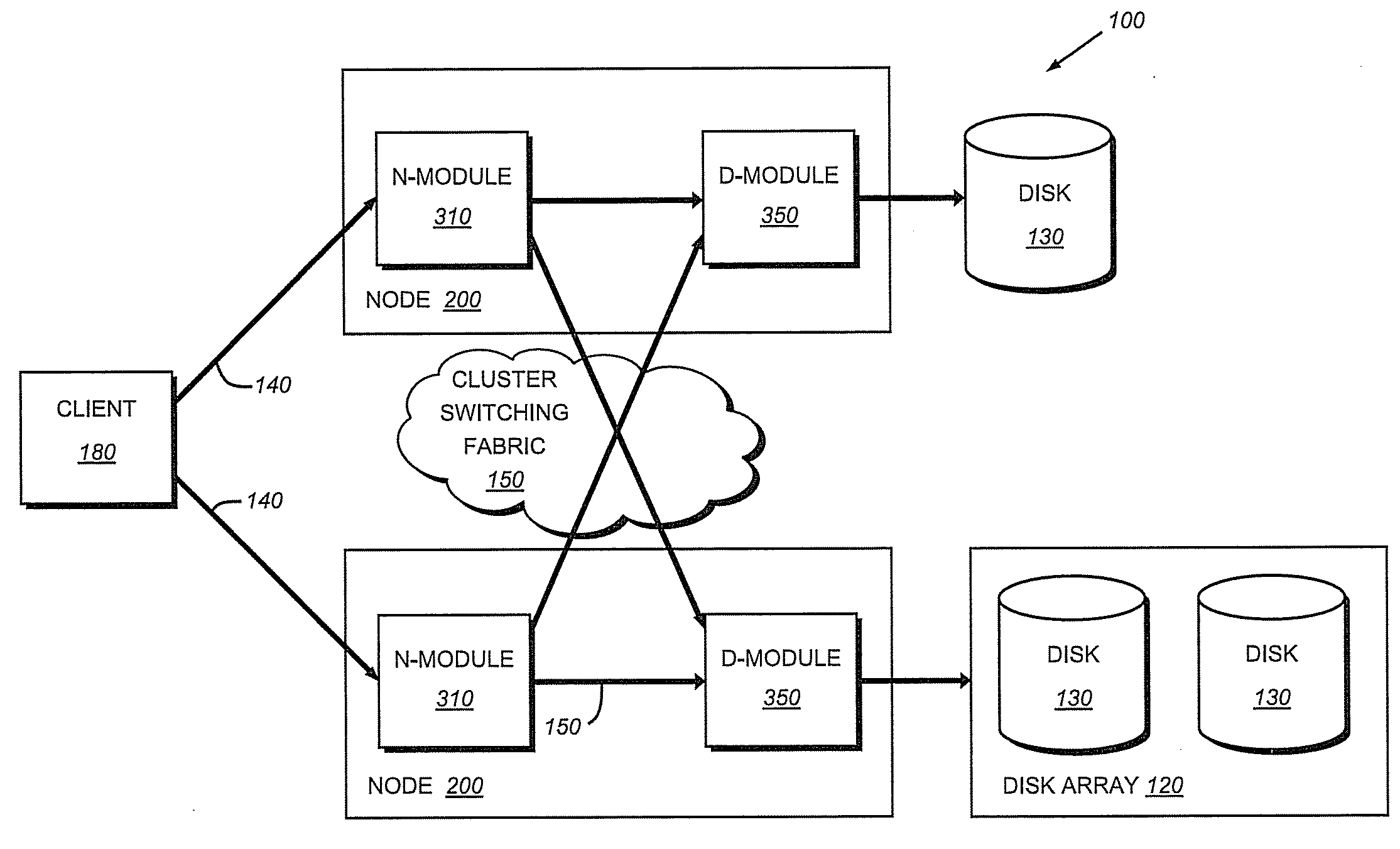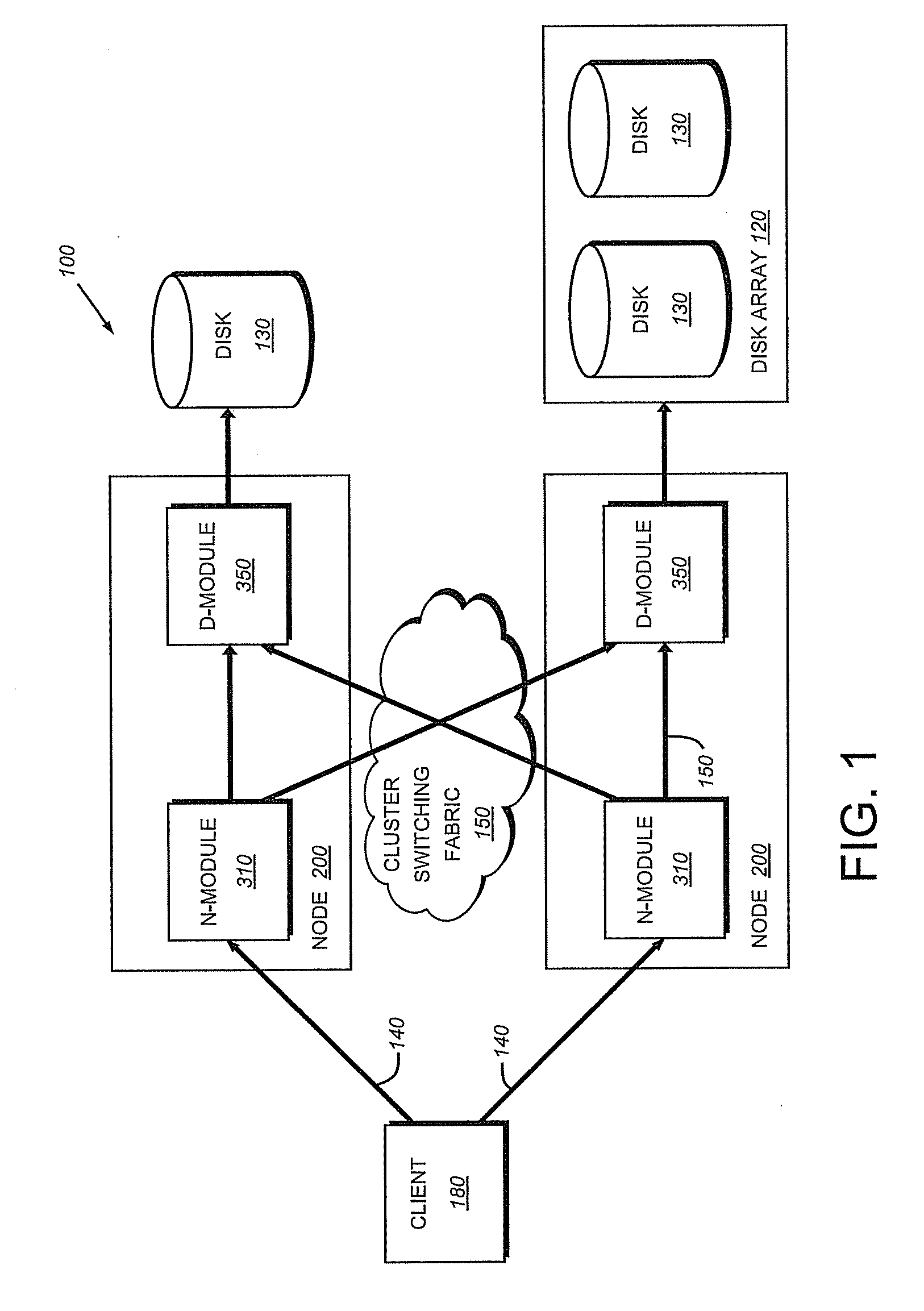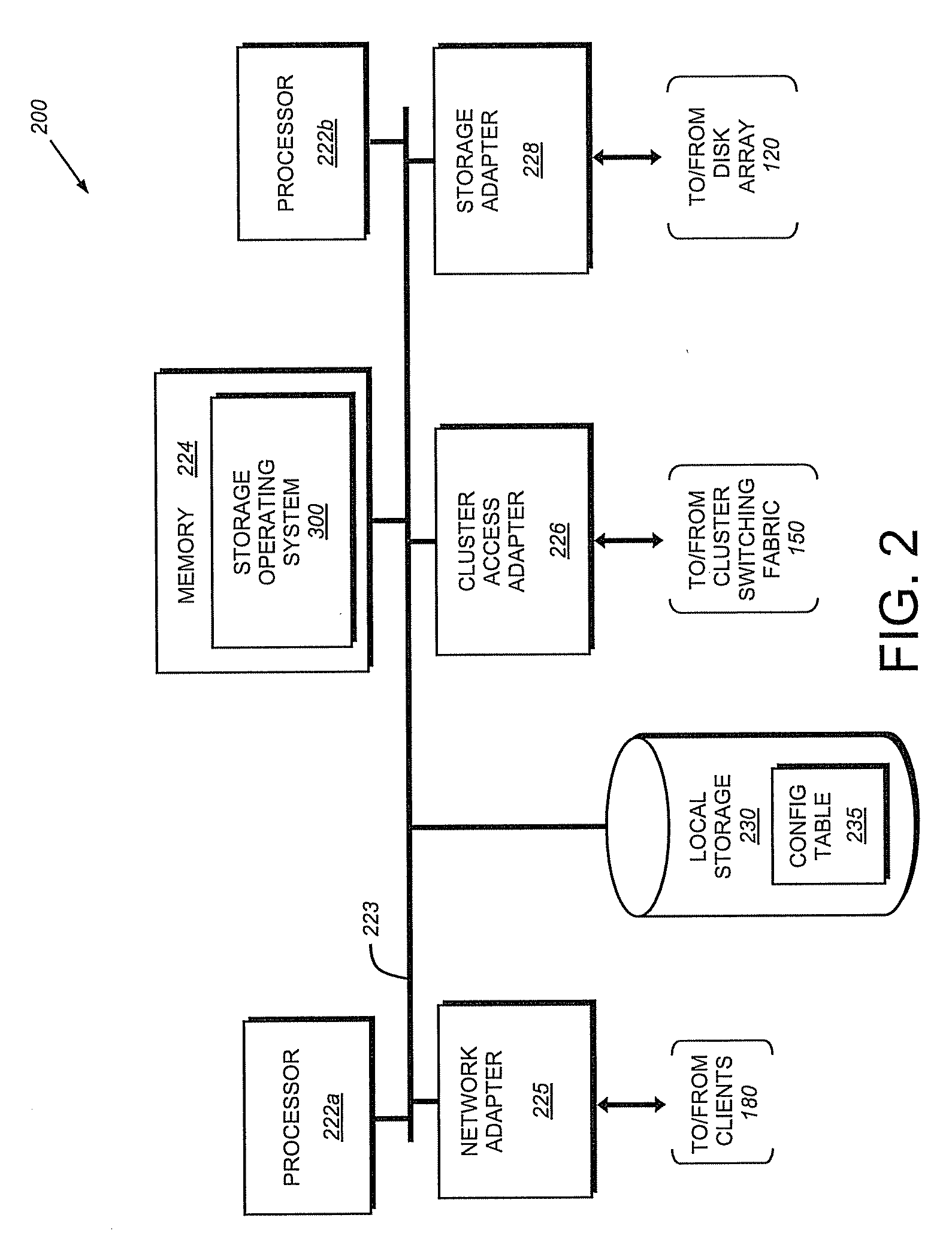Data distribution through capacity leveling in a striped file system
a file system and capacity level technology, applied in the field of striped file systems, can solve the problems of increasing the total cost of ownership of a clustered storage system, increasing the cost of storage service, and concomitant speed and performance degradation, so as to reduce the underutilized processing resources and improve the efficiency of storage servi
- Summary
- Abstract
- Description
- Claims
- Application Information
AI Technical Summary
Benefits of technology
Problems solved by technology
Method used
Image
Examples
Embodiment Construction
[0030]A. Cluster Environment
[0031]FIG. 1 is a schematic block diagram of a plurality of nodes 200 interconnected as a cluster 100 and configured to provide storage service relating to the organization of information on storage devices in accordance with an illustrative embodiment of the present invention. The nodes 200 comprise various functional components that cooperate to provide a distributed storage system architecture of the cluster 100. To that end, each node 200 is generally organized as a network element (N-module 310) and a disk element (D-module 350). The N-module 310 includes functionality that enables the node 200 to connect to clients 180 over a computer network 140, while each D-module 350 connects to one or more storage devices, such as disks 130 of a disk array 120. The nodes 200 are interconnected by a cluster switching fabric 150 which, in the illustrative embodiment, may be embodied as a Gigabit Ethernet switch. An exemplary distributed file system architecture i...
PUM
 Login to View More
Login to View More Abstract
Description
Claims
Application Information
 Login to View More
Login to View More - R&D
- Intellectual Property
- Life Sciences
- Materials
- Tech Scout
- Unparalleled Data Quality
- Higher Quality Content
- 60% Fewer Hallucinations
Browse by: Latest US Patents, China's latest patents, Technical Efficacy Thesaurus, Application Domain, Technology Topic, Popular Technical Reports.
© 2025 PatSnap. All rights reserved.Legal|Privacy policy|Modern Slavery Act Transparency Statement|Sitemap|About US| Contact US: help@patsnap.com



